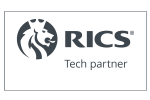Like other assets, property has to be managed to ensure that it remains in the best possible condition and gives the greatest return on investment. This is where understanding the asset lifecycle management can be valuable.
Beginning with investment planning, an organised approach to property asset lifecycle management will also involve the stages of acquisition and maintenance. And while it will ideally be maintained to a high standard, there may be a point when the property is to be sold.
Keep on reading as we cover these property lifecycle stages in this blog, emphasising the importance of clarity in commercial real estate management and pointing to the benefits of an asset register.
What are the 4 asset lifecycle management stages?
- Planning
- Acquisition
- Operation & Maintenance
- Renewal or Disposal
1. Planning
By basing decisions on the four lifecycle stages, property investors can limit risks like asset ageing, excessive maintenance costs, and value depreciation. As we mentioned, this should begin with a plan, considering any existing assets in the portfolio.
Factors such as the preferred property location and available budget should also be considered at this stage.
The potential investor may consult with an Asset Manager for advice on which properties to buy and ways of maximising the rental yield. The Asset Manager might also be expected to draw up an investment strategy accounting for market trends and conditions.
Purchased properties will ideally generate consistent profit and/or become increasingly valuable over time, and investment recommendations may also be based on these factors:
- Expected changes in property value
- Anticipated costs of ownership
- Risks that may have to be managed.
2. Acquisition
If a good deal of time has been spent at the planning stage then investment decisions should be made with relative confidence. Following initial research, a purchase may be made in line with the agreed budget and anticipated costs of property improvement.
3. Operation and maintenance
This is typically the longest stage of the asset lifecycle, with the owner and asset manager expected to do everything within their scope to keep the property in the best condition. Ideally, an asset lifecycle management plan will have been drawn up, highlighting the monitoring methods and checks that should be carried out in case any issues emerge.
Where this isn’t the case there will be an increased risk of unplanned downtime and high repair costs. There may also be the prospect of property improvements and management changes for greater resident satisfaction and returns. This stage will also involve tasks such as:
- Rent collection
- Lease enforcement
- Inspections.
Operation and maintenance processes can be enhanced with property technologies, as we highlighted in our blog on Asset Management and Digital Transformation. Such technologies enable seamless communications with property stakeholders, resulting in faster response times and increased tenant satisfaction.
As an example, IoT (Internet of Things) allows for the improved monitoring of property issues with better insights into the needs and expectations of residents. In cases where IoT isn’t in use, proactive management is advised.
In taking a proactive approach asset managers can minimise the need for emergency repairs and ensure that properties remain as attractive as possible to prospective tenants. There’s also the potential for higher yields.
4. Renewal or disposal
There’s no reason why a property asset can’t remain at the operation and maintenance stage indefinitely. However, property assets may eventually be passed on to family members, professional partners, other investors and so on.
Alternatively, there might come a time when the owner decides to sell and look for fresh investment opportunities. If such a decision is made and the property sale is secured, then the lifecycle can begin again at the planning stage.
Selling decisions may also be made due to:
- The introduction of prohibitive legislation
- Increased mortgage costs and tax changes
- The emergence of costly property issues
- Tenant behaviour and missed rental payments.
Properties that are to be kept within the investor’s portfolio may have to be re-listed for the attraction of new tenants. This should be done within good time before the existing lease runs out, with a move-out inspection being carried out and any damages noted.
The property will also have to be re-keyed and any new tenants onboarded so that they are aware of the expectations. Alternatively, a lease renewal may have to be drafted and agreed upon.

Asset lifecycle management in context
Affordable Housing
The four asset lifecycle stages will apply differently depending on the type of property asset class being managed. In affordable housing, for example, the planning stage may involve identifying the need for accommodation within a local community.
A prospective developer might then look into the availability of funding in the form of government grants, subsidies, or private investments. It will also be important to review local regulations that apply to the development of affordable housing.
After securing the funding and developing the affordable homes, the acquisition phase may involve the screening and selection of suitable tenants. Rent must be managed at an affordable rate, with the properties also being maintained to ensure tenant satisfaction. A budget will ideally be set aside for such maintenance, with any repairs and modifications made to ensure compliance with regulations.
A decision over whether to sell or redevelop may be made depending on the property condition and the yield being generated. The owner might decide that it’s best to convert or look for alternative investment opportunities. Any such decision should be taken considering the interests of the current tenants.
Hotels
Hotel investment planning may involve the identification of suitable locations, considering such factors as expected demand and competition. Again the regulations should be taken into account, with finance potentially being secured through loans or partnerships.
It may take many months or years for a new hotel to be developed and prepared for opening. This will involve the setting of suitable room rates and marketing for the attraction of guests. After opening there will be the costs of delivering a quality service and keeping the property in the best possible condition.
Options such as renovation, repurposing, and sale may eventually be considered depending on the hotel’s performance. Transition to new ownership or everyday operation might also have to be managed.
Offices
The decision to invest in commercial real estate – like an office block, for example – may be based on factors such as anticipated tenant demand, accessibility, and market trends. The commercial funding options might then be considered, ensuring that office buildings can be developed following relevant regulations.
After completing the purchase a new owner may have to market the office space and complete leasing contracts. As with the other property assets, it will be important to monitor everyday operations and maintain the space for tenant satisfaction.
At the end of the lifecycle, the owner might decide to sell, reposition, or redevelop the office space. Such decisions should be made in consideration of market conditions and tenant demand. It might also be necessary to manage a successful transition to new ownership or operation.
The importance of an asset register for asset lifecycle management
Technology can make a positive difference to property asset lifecycle management throughout every stage. At the planning stage, this applies to the digitisation of the asset register, specifying the capital threshold of all assets that are to be monitored in case of a need for maintenance or repair.
This register should also detail when such assets were purchased and how much they cost to run. Regular reviews might indicate the possibility of replacing these assets with newer and more cost-effective versions.
As one of the core elements of asset management software, the register should include historical and real-time data specific to the assets’ performance and value. This data can be leveraged for the creation of reports indicating the need for maintenance.
Far more efficient than the traditional use of pen and paper, this is just one of the features of Property Inspect. Book a demo today and explore how Property Inspect can help you manage your asset register.














